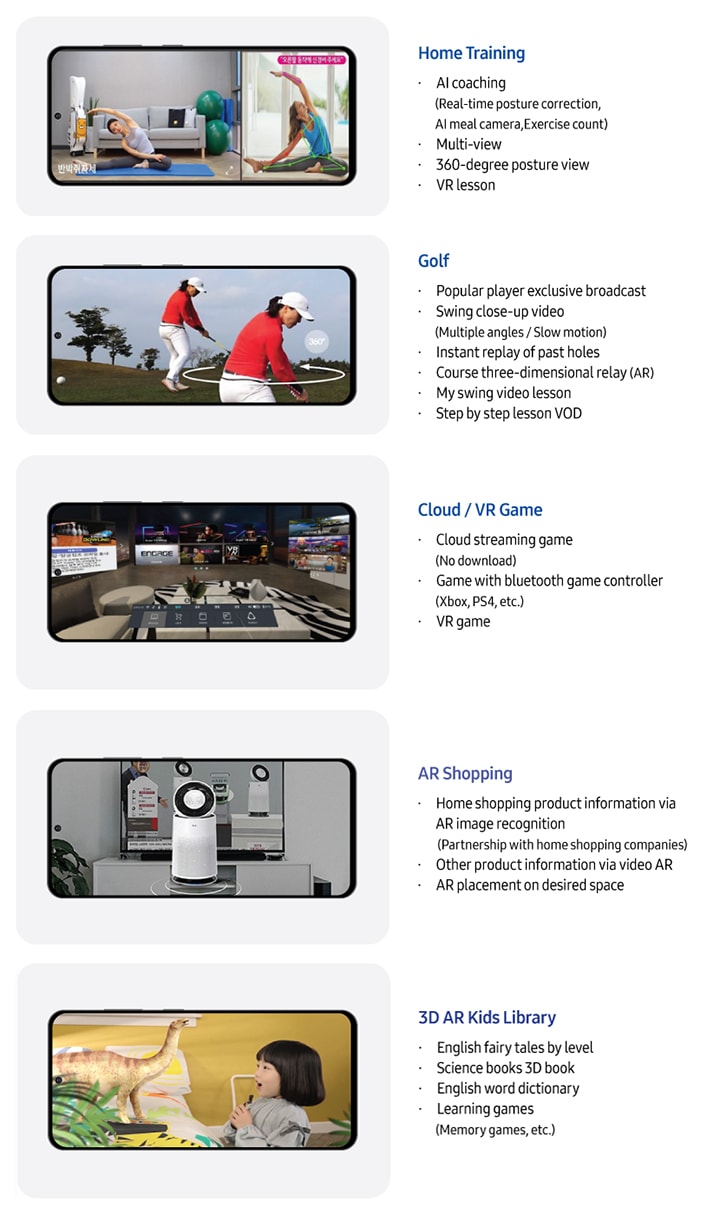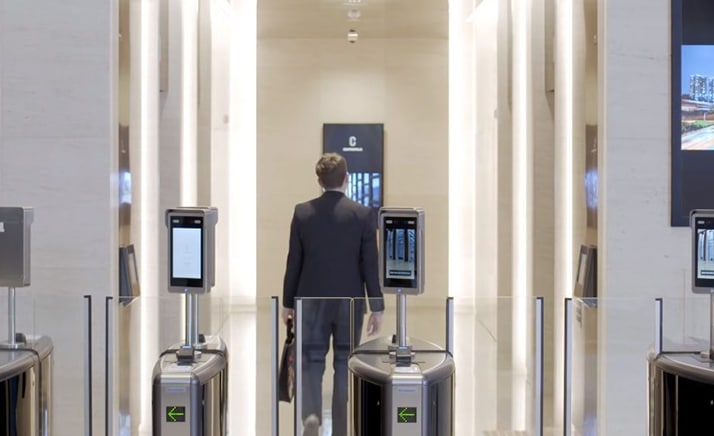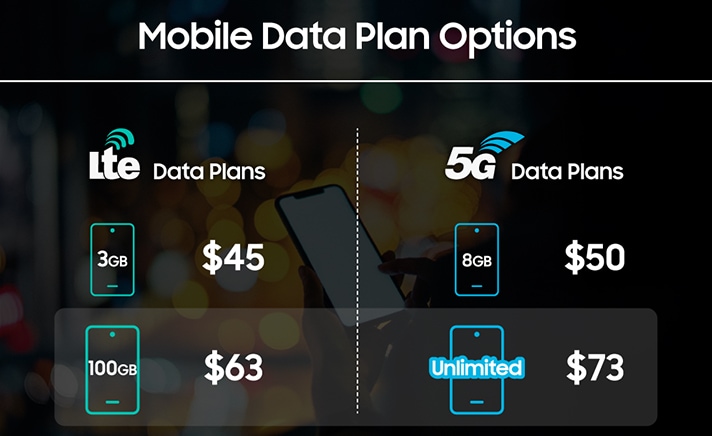Key drivers for Korea’s 5G success: exploring compelling 5G services
BRAND INNOVATION
Key drivers for Korea’s 5G Success:
exploring compelling 5G services
“We have seen the number of 5G subscribers reach 14% of the total population in Korea within just 14 months of launch.1 Not only is the subscriber base growing but 5G users are also consuming about 28% of the total mobile data traffic.2 5G has certainly opened doors to new possibilities. I believe the success in Korea can be attributed to the Korean operators’ strategic approaches in introducing innovative 5G services. Operators are offering compelling B2C services, as well as industry-wide B2B use cases, which are creating momentum and convincing subscribers and enterprises to choose 5G.”

Consumer Use Cases

Enterprise Use Cases
Smart factory is a notable example that demonstrates how 5G’s low latency, connectivity and high speed will enable many benefits for this industry. With 5G, real-time detection of defects based on AI and wireless robot control help improve operational productivity, and are just two examples.
SK Telecom introduced a smart office system that enables flexible “work-from-anywhere” capabilities. 5G smart offices have a ‘5G walk-through’ system, which allows entry without ID cards via AI-based facial recognition and a mobile VDI docking system. Employees can choose to work from a smart office closer to home to save on commute time and raise convenience.
With 5G, first responders can effectively and instantaneously exchange multi-media such as high-resolution images and live videos for emergency responses. With a reliable 5G network, public safety agencies can take advantage of robust, real-time surveillance communication technologies.

Distinctive 5G Service Strategies by Korean Operators
SK Telecom created 5G clusters, which are focused zones where subscribers can experience the real benefits of 5G, such as high-speed mobile connectivity, new applications and other 5G membership benefits. In 2019, SK Telecom created 70 5G clusters mainly in densely populated areas, transportation hubs and college campus districts, and is planning to increase the number of 5G clusters to 200 by the end of this year.
With 5G commercialization, KT announced that it would focus its 5G services in the B2B vertical, in which they have already experienced various successful use cases. KT has signed strategic business agreements to implement 5G in various B2B sectors such as smart factories, autonomous driving, smart medical services and digital media. By the end of 2019, KT had introduced 150 B2B use cases and secured 53 5G enterprise clients.
LG U+ took a step-by-step approach to introduce 5G services in multiple phases. Initially in the first phase, the service was branded U+ 5G 1.0, and the operator added 5G features to its existing 4G services. In June 2019, LG U+ launched U+ 5G 2.0, where it introduced new 5G-only services, expanding into gaming and entertainment. In 2020, LG U+ launched U+ 5G 3.0 services by integrating cloud services into 5G within various sectors, including education. Many of these U+ 5G services have been upgraded to include AR and VR capabilities as well.
Original article from Samsung.com here.
You are invited
Get ready for exclusive access to in-depth features with thought leaders, invitations to bespoke events, editorial beats on innovation, and first dibs on the latest Samsung products. Also be the first in line to reZerve your monthly delights of new experiences at no charge. Join our mailing list today.
Subscribe





